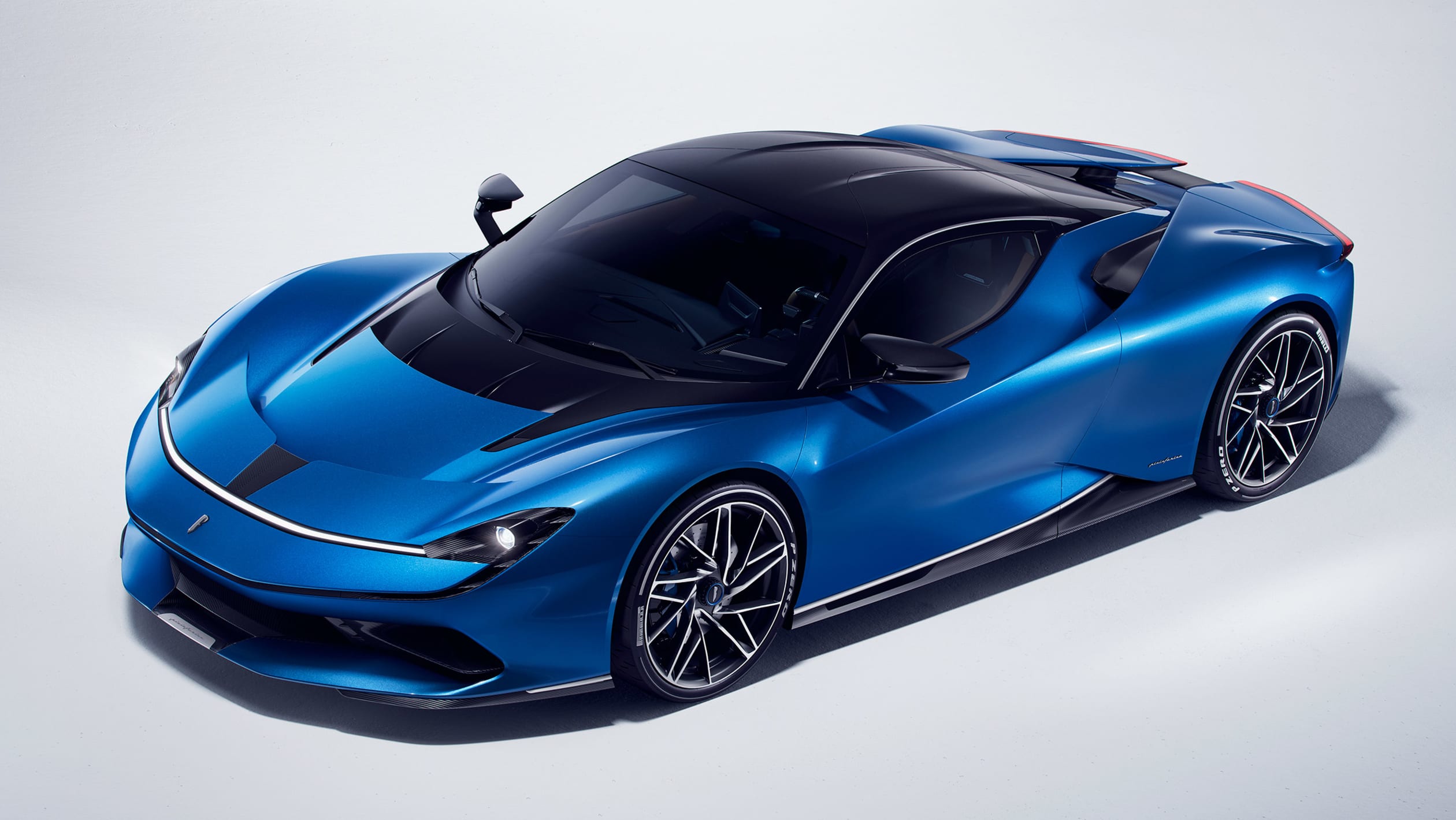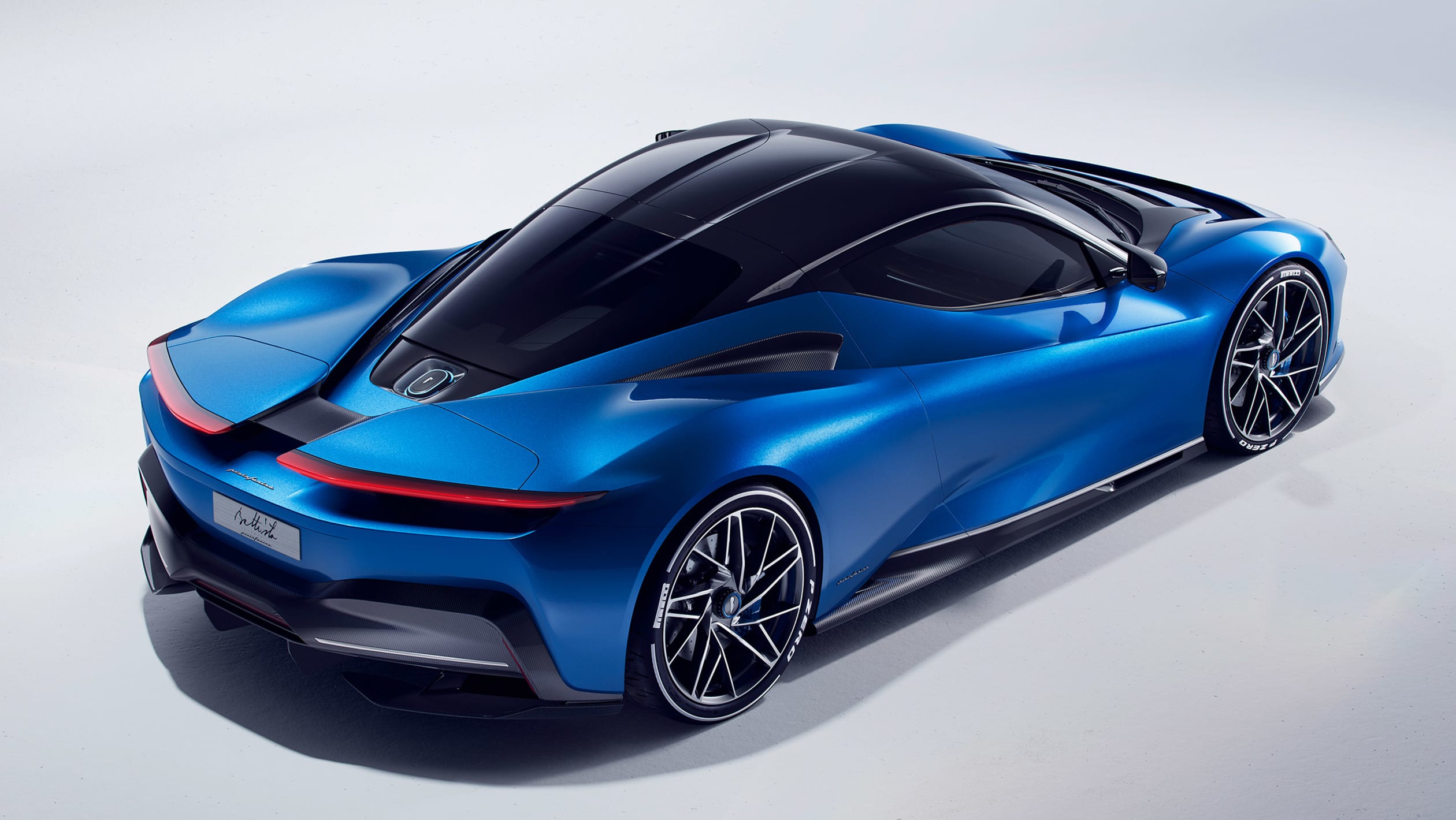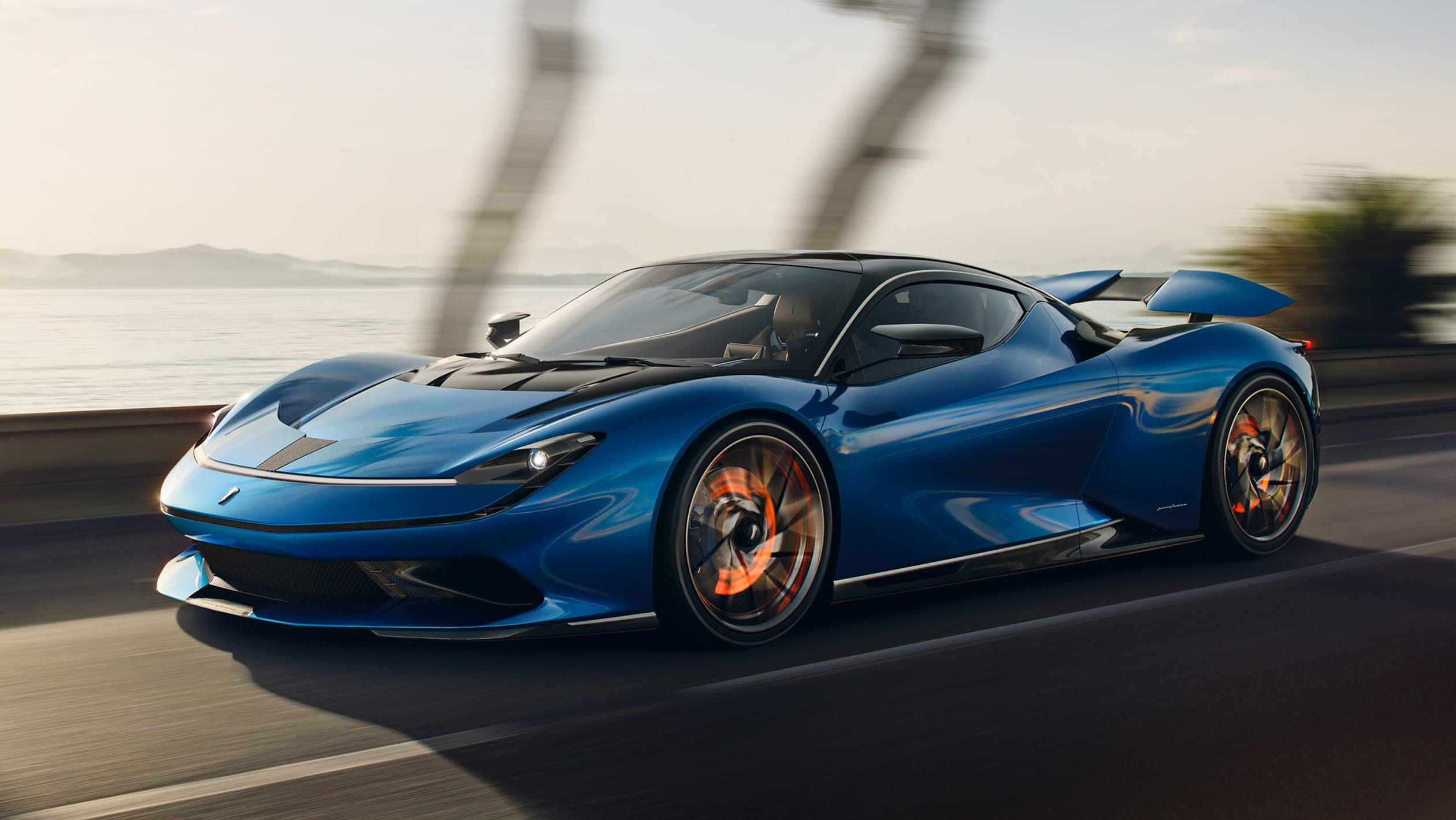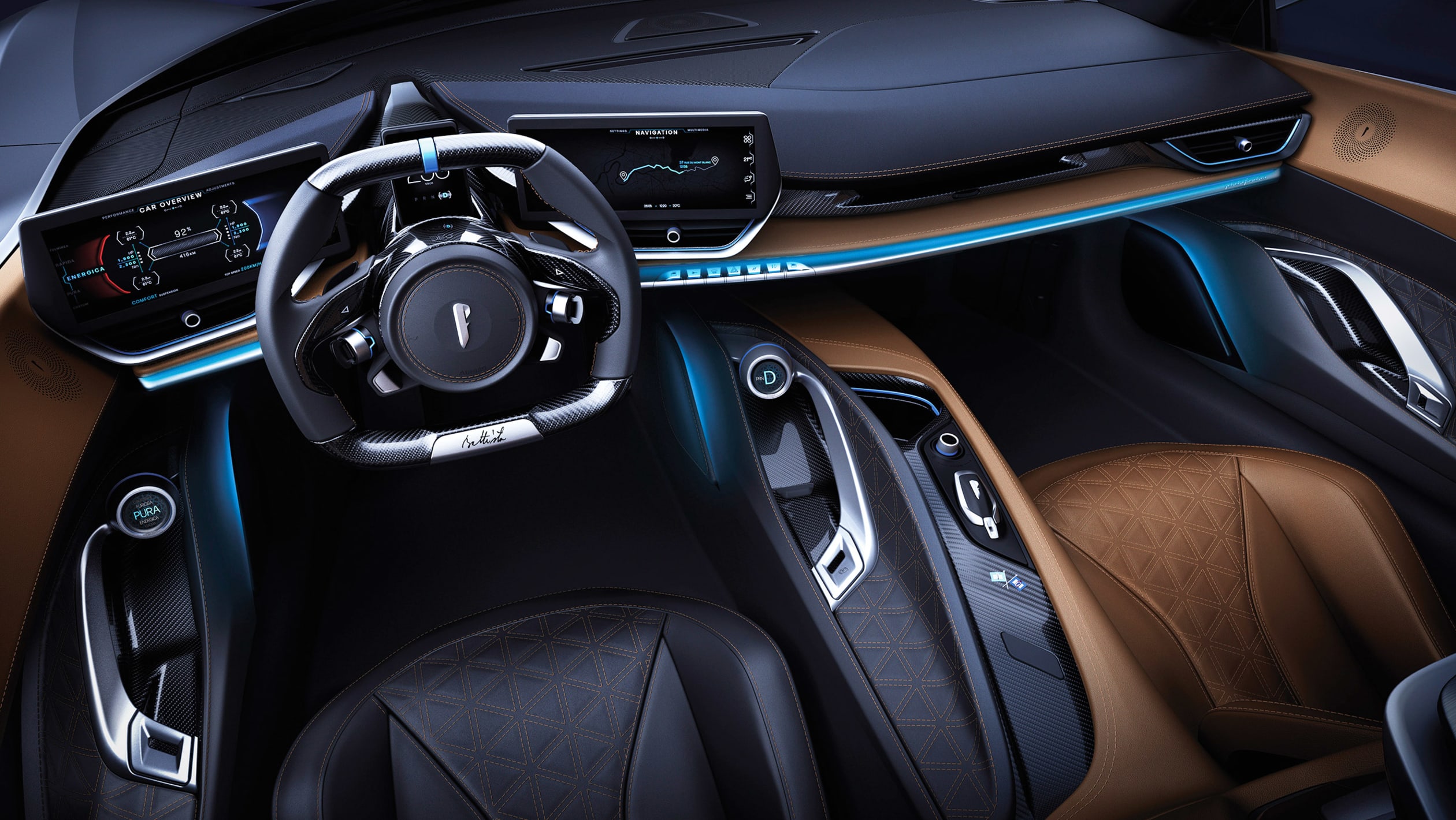 Pininfarina’s all-electric Battista hypercar is undergoing its toughest challenges yet as it completes high speed testing at the Nardo proving ground.
Pininfarina’s all-electric Battista hypercar is undergoing its toughest challenges yet as it completes high speed testing at the Nardo proving ground.
The company says the first successful high-speed test of its Lotus Evija rival is a major milestone in the car’s development programme. The car being put through its paces at the centre by company test driver and vehicle dynamics manager Georgios Syropoulos isn’t a stripped out mule either, but a fully equipped car as close to a roadworthy Battista as possible.
Chassis development and torque vectoring calibration is the key aim of the high-speed tests rather than powertrain validation. Pininfarina says it is fine tuning bespoke chassis settings so that the Battista has broad variation in characteristics depending on the drive mode selected.
The Battista is powered by four electric motors – one for each wheel – which produce a combined output of 1,397kW and 2,300Nm. The Italian brand says the system will provide a 0–100km/h time of less than two seconds, a 0–300km/h time of 12 seconds and a top speed of 350km/h.
 When the first examples reach customers later this year, the Battista will be one of the most powerful road-legal cars ever produced, with almost 300kW more than the Bugatti Chiron. The only car the Battista currently trails is the Lotus Evija, which has an extra 75kW over Pininfarina’s effort.
When the first examples reach customers later this year, the Battista will be one of the most powerful road-legal cars ever produced, with almost 300kW more than the Bugatti Chiron. The only car the Battista currently trails is the Lotus Evija, which has an extra 75kW over Pininfarina’s effort.
The Battista’s electric motors are powered by a 120kWh liquid-cooled lithium-ion battery, which is mounted low in the car’s chassis and laid out in a T-shape configuration to aid the car’s weight distribution. The powertrain has been developed in tandem with Rimac. and Pininfarina is targeting a maximum range of around 500 kilometres.
The Battista is designed around a carbon fibre monocoque with a carbon fibre and aluminium rear subframe. The car also features a set of carbon-ceramic brakes with six-pot calipers, a torque vectoring system, adjustable dampers, an active rear wing and a range of passive aerodynamic vanes.
 Production of the pure-electric hypercar is strictly limited to just 150 units – with the USA, Europe and Middle East getting 50 examples each. Every model will be hand-built at the firm’s facility in Turin, and prices are expected to range between AUD$2.71 million and AUD$3.61 million.
Production of the pure-electric hypercar is strictly limited to just 150 units – with the USA, Europe and Middle East getting 50 examples each. Every model will be hand-built at the firm’s facility in Turin, and prices are expected to range between AUD$2.71 million and AUD$3.61 million.
Pininfarina says it will offer “almost endless” opportunities for interior customisation and, given the model’s exclusivity, it’s likely that each model will be tailored around the buyer’s preferences, with the upholstery, technology and trim all created bespoke. Features expected to persist across each car will be the dual-screen infotainment system and ambient LED lighting.
 The story of the Battista
The story of the Battista
In 2015, Pininfarina was acquired by Indian firm Mahindra & Mahindra. Shortly after the acquisition, Pininfarina announced it would start producing its own vehicles as Automobili Pininfarina (alongside its existing consultancy business), borrowing the all-electric expertise gained by the Mahindra’s participation in the inaugural 2014–15 Formula E season.
The Battista’s design was carried out under the direction of Automobili Pininfarina’s recently-appointed design director, Luca Borgogno, who moved across from the firm’s existing consultancy division.
Towards the end of 2018, Pininfarina named its new hypercar, dedicating it to the company’s founder, Battista Farina. When the announcement was made, the company’s chairman Paolo Pininfarina, grandson to Battista Farina, said: “This is genuinely a dream come true. My grandfather always had the vision that one day there would be a stand-alone range of Pininfarina-branded cars. For me, we simply had to call it Battista.”
Pininfarina has also entered a partnership with global EV charging network ChargePoint to provide buyers of the upcoming Battista electric hypercar with five years of unlimited complimentary public charging at more 115,000 locations across Europe and North America.
Buyers will also get a bespoke domestic wallbox charger, designed by Pininfarina and made from recycled materials, which promises to supply up to 7.2kW of power – enough to fully recharge the hypercar’s 120kWh battery pack in around six hours.
James Brodie




 Pininfarina’s all-electric Battista hypercar is undergoing its toughest challenges yet as it completes high speed testing at the Nardo proving ground.
Pininfarina’s all-electric Battista hypercar is undergoing its toughest challenges yet as it completes high speed testing at the Nardo proving ground. The story of the Battista
The story of the Battista